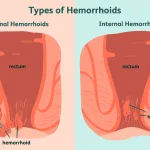Short answer: hidradenitis suppurativa (HS) is not a classic autoimmune disease. The brightest research of the last few years tells us it belongs to the family of autoinflammatory skin disorders. Knowing the difference matters – it shapes the way doctors treat the condition, and it helps you understand why some people with HS also develop true autoimmune illnesses.
Let’s dig into the science, the myths, and the practical steps you can take right now. Imagine we’re sitting at a coffee table, me with a notebook and you with a cup of tea, chatting about something that’s been bothering you for years. Ready?
What Is HS?
Definition & Core Features
Hidradenitis suppurativa is a chronic inflammatory skin disease marked by painful, deep‑lying nodules that can burst, drain pus, and leave behind scarred tunnels (called sinus tracts). The lesions are most often found where skin rubs together – under the arms, around the groin, beneath the breasts, and behind the knees.
HS vs. Acne, Boils, Folliculitis
It’s easy to mistake HS for stubborn acne or a boil. The tell‑tale difference? HS tends to appear symmetrically (the same spots on both sides of the body) and recur in the same locations over months or years. Acne usually shows up on the face or back and heals without the deep tunnels that HS creates.
Who Gets HS? Prevalence & Risk Factors
About 2 % of the population will develop HS at some point. It most commonly shows up in women aged 18‑29, especially those with a family history, obesity, or who smoke. (A quick glance at the research from the Autoimmune Association confirms those risk factors.)
Autoimmune vs Autoinflammatory
What Makes a Disease Autoimmune?
In an autoimmune disease, the adaptive immune system mistakes a normal part of the body for an invader. It creates specific antibodies that target healthy tissue – think rheumatoid arthritis or lupus. The hallmark is a “self‑reactive” response that can be measured in blood tests.
What Makes a Disease Autoinflammatory?
Autoinflammatory conditions, by contrast, involve the innate immune system – the body’s first line of defense. Instead of antibodies, the problem lies in over‑active immune cells and inflammatory proteins called cytokines. Nobody can point to a single auto‑antibody; the inflammation springs up “for no clear reason.”
Immune Pathways in HS
AIM2 Inflammasome & IL‑17
Recent work highlights the AIM2 inflammasome as a key trigger in HS lesions – it lights up the inflammatory cascade that leads to pus‑filled bumps. Another star player is IL‑17, a cytokine that fuels skin inflammation. Both findings come from a 2023 review in JAAD International and a 2025 article on Healthline that re‑classifies HS as an autoinflammatory keratinization disease.
Why Autoinflammatory Fits
Because we don’t see the auto‑antibodies that define true autoimmune disorders, and because biologic drugs that block IL‑17 or TNF‑α dramatically improve symptoms, the autoinflammatory label aligns better with the evidence.
Is HS Labeled Autoimmune?
Older Studies That Said Yes
Earlier textbooks sometimes lumped HS with autoimmune skin disease simply because of the chronic inflammation. Those sources are now considered outdated – the scientific community has moved on.
Current Stance of Organizations
The Autoimmune Association still lists HS under “related diseases,” but it clarifies that HS is not a classic autoimmune condition. The British Association of Dermatologists’ patient leaflets echo this nuance, focusing on inflammation rather than auto‑immunity.
Quick Comparison Table
| Feature | Autoimmune | Autoinflammatory (HS) |
|---|---|---|
| Key immune component | Adaptive (antibodies, T‑cells) | Innate (inflammasomes, cytokines) |
| Typical lab markers | Auto‑antibodies (ANA, RF) | Elevated CRP, IL‑1β, IL‑17 |
| Response to IL‑17 blockers | Variable | Often dramatic improvement |
| Common comorbidities | Other autoimmune diseases | Obesity, smoking, metabolic syndrome |
Autoimmune Comorbidities
Common Overlapping Conditions
Even though HS itself isn’t autoimmune, people with HS have higher rates of true autoimmune diseases such as Crohn’s disease, rheumatoid arthritis, lupus, and psoriasis. A 2024 review from myHSteam notes this overlap and suggests a shared genetic backdrop.
How Often Do They Appear?
Studies estimate that 10‑20 % of HS patients will develop at least one other autoimmune condition during their lifetime. The risk is especially pronounced for inflammatory bowel disease (IBD) – up to 30 % of HS patients report IBD symptoms.
What This Means for You
When you’re seeing a dermatologist for HS, it’s worth mentioning any joint pain, gut issues, or unusual rashes. A coordinated care plan can catch a co‑existing autoimmune disease early, before it causes extra trouble.
Recognizing HS Symptoms
Typical Lesion Sites
Look for painful, firm nodules that may turn into open sores or “tunnels.” Common hotspots:
- Armpits
- Groin and inner thighs
- Under the breasts
- Buttocks and perianal area
- Occasionally behind the ears or on the neck
Staging the Disease
Doctors use the Hurley staging system:
- Stage I – isolated nodules without sinus tracts.
- Stage II – recurrent abscesses with sinus tracts connecting one or two areas.
- Stage III – extensive interconnected tracts across multiple regions.
When to Seek Tests
If you notice rapidly spreading lesions, fever, or a foul‑smelling discharge, it’s time for a work‑up. Labs may include a CBC, CRP, or cultures to rule out infection. Imaging (ultrasound or MRI) can map deep sinus tracts when surgery is on the table.
Effective Treatment Options
First‑Line Medical Options
For many, lifestyle tweaks plus topical or oral antibiotics are enough to keep flares at bay. Common prescriptions:
- Topical clindamycin
- Oral tetracyclines (doxycycline, minocycline)
- Hormonal therapy (combined oral contraceptives or spironolactone) for women
Biologics That Target Inflammation
When lesions become stubborn, biologic drugs step in. The FDA‑approved adalimumab (TNF‑α blocker) showed significant improvement in the pivotal PIONEER trials. More recent data highlight IL‑17 inhibitors like secukinumab – they work because they silence the cytokine loop driving the autoinflammatory fire.
Surgical & Procedural Choices
For stage II‑III disease, removing the affected tissue can prevent recurring tunnels. Options include:
- Excision of isolated nodules
- Deroofing (opening and cleaning sinus tracts)
- Laser therapy (CO₂ or Nd:YAG) to shrink lesions
Each approach carries risks (scarring, infection), so a thorough discussion with a dermatologist‑surgeon is essential.
Lifestyle & Adjunct Tips
Because HS thrives in warm, moist, friction‑heavy environments, consider these everyday hacks:
- Wear loose, breathable fabrics (cotton, moisture‑wicking blends).
- Maintain a healthy weight – even a 5 % loss can reduce flare frequency.
- Quit smoking; nicotine impairs skin healing and fuels inflammation.
- Watch your diet: some patients report fewer flares when cutting dairy, refined sugars, or high‑glycemic foods (see the anecdotal evidence on Healthline).
- Manage stress with yoga, meditation, or journaling – stress hormones can trigger immune spikes.
Practical Guidance for You
Weighing Risks & Benefits
Before diving into a biologic, ask yourself:
- How severe are my flares? (Hurley stage, pain level)
- What side‑effects am I comfortable managing? (injection site reactions, potential infection risk)
- Does my insurance cover the medication?
Talk to a dermatologist who can map out a step‑by‑step plan – often a short trial of antibiotics, followed by a biologic if needed, works best.
Everyday Self‑Care Hacks
Here are three quick things you can start today:
- Cool showers, not hot baths. Heat widens pores and can worsen inflammation.
- Gentle cleansing. Use a mild, fragrance‑free soap and pat dry – rubbing can irritate existing nodules.
- Track your flares. Keep a simple notebook: date, location, possible trigger (food, stress, clothing). Patterns emerge faster than you think.
Support & Resources
Living with HS isn’t a solo journey. Consider joining a reputable community like the HS Foundation or a local support group. Clinical‑trial portals (e.g., ClinicalTrials.gov) list experimental therapies that might fit your profile.
Conclusion
To wrap up, hidradenitis suppurativa sits squarely in the autoinflammatory camp, not the autoimmune one. That distinction clarifies why drugs that block IL‑17 or TNF‑α work so well, and it explains why you might still see other autoimmune diseases appear alongside HS. By recognizing the signs early, staying on top of lifestyle triggers, and partnering with a knowledgeable dermatologist, you can tame the flare‑ups and reclaim comfort.
What’s your HS story? Have you found a treatment that finally makes a difference, or are you still searching for answers? Drop a comment below, share your experience, or ask any lingering questions – we’re all in this together.


















Leave a Reply
You must be logged in to post a comment.